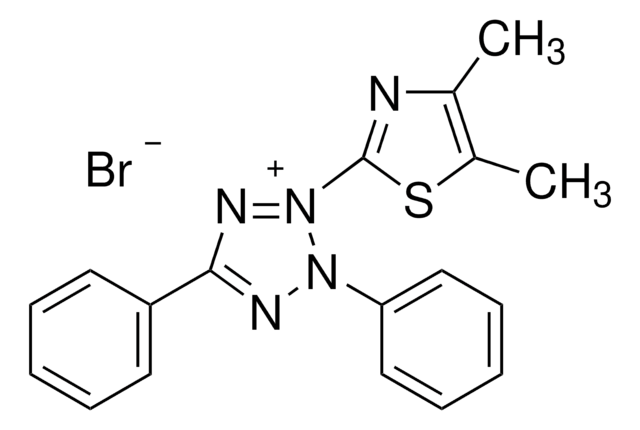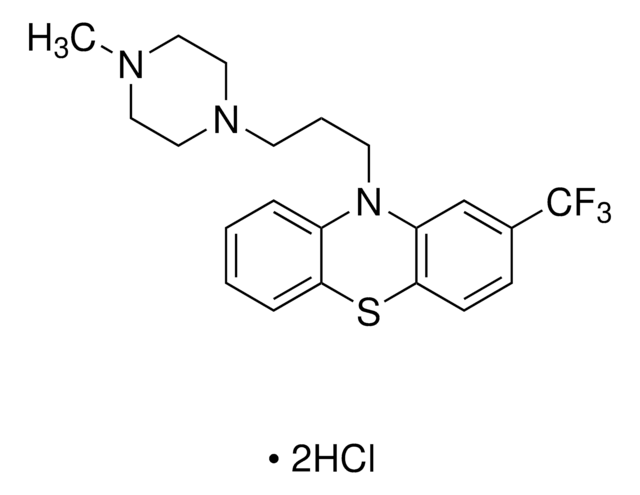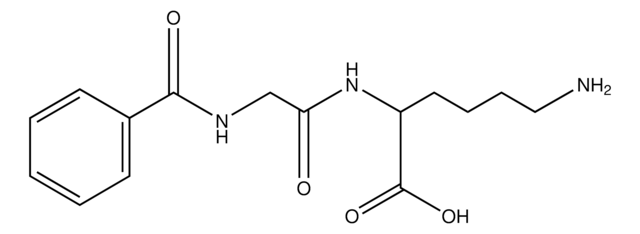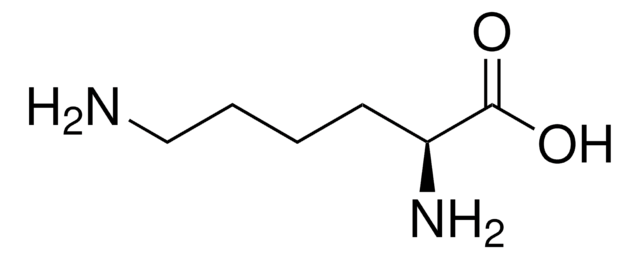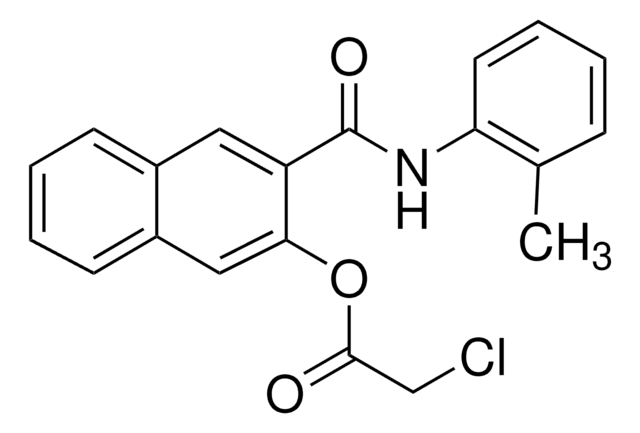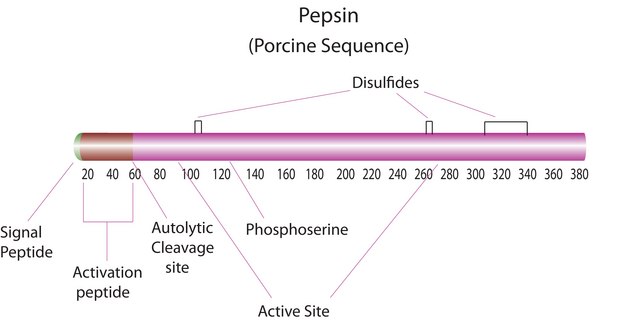P3246
Pipamperone dihydrochloride
~99% (HPLC), powder
Synonym(s):
1′-[4-(4-Fluorophenyl)-4-oxobutyl]-[1,4′-bipiperidine]-4′-carboxamide dihydrochloride, R4050
About This Item
Recommended Products
Assay
~99% (HPLC)
Quality Level
form
powder
color
white
solubility
H2O: >2.0 mg/mL
originator
Johnson & Johnson
SMILES string
Cl[H].Cl[H].NC(=O)C1(CCN(CCCC(=O)c2ccc(F)cc2)CC1)N3CCCCC3
InChI
1S/C21H30FN3O2.2ClH/c22-18-8-6-17(7-9-18)19(26)5-4-12-24-15-10-21(11-16-24,20(23)27)25-13-2-1-3-14-25;;/h6-9H,1-5,10-16H2,(H2,23,27);2*1H
InChI key
BMXXSXQVMCXGJM-UHFFFAOYSA-N
Application
- as an internal standard in liquid chromatography with coulometric detection
- as an antipsychotic drugs to test its interaction with human ether-a-go-go-related gene (hERG) channel
- as an internal standard to spike human colostrum samples for reversed phase liquid chromatography- ultraviolet (LC-UV) analysis
Biochem/physiol Actions
Features and Benefits
Signal Word
Warning
Hazard Statements
Hazard Classifications
Acute Tox. 4 Oral
Storage Class Code
11 - Combustible Solids
WGK
WGK 1
Personal Protective Equipment
Regulatory Information
Choose from one of the most recent versions:
Certificates of Analysis (COA)
Don't see the Right Version?
If you require a particular version, you can look up a specific certificate by the Lot or Batch number.
Already Own This Product?
Find documentation for the products that you have recently purchased in the Document Library.
Our team of scientists has experience in all areas of research including Life Science, Material Science, Chemical Synthesis, Chromatography, Analytical and many others.
Contact Technical Service
